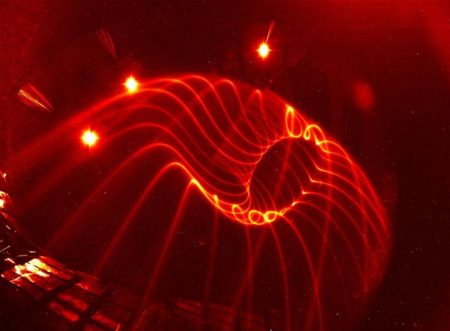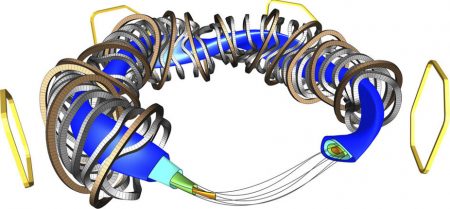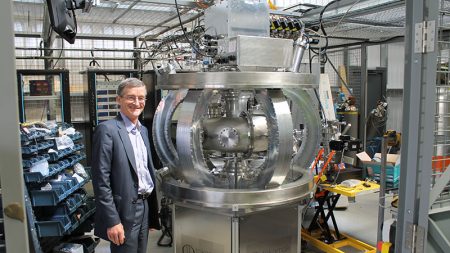December 7, 2016 – Two advances in the development of commercial fusion reactors that bring us closer to the reality of a future of clean unlimited energy. The first is about a technology I first described back in November 2015. The second describes work on a tokamak design not on the scale of the ITER project in France.
Stellerator Gets Put Through its Paces and Comes up with Glowing Results
The Wendelstein 7-X stellerator which I have written about in the past is showing great promise in being able to control nuclear fusion reactions. In the latest tests it has successfully contained 100 million degree Celsius (180 million Fahrenheit) helium plasmas. The twisty-shaped stellerator uses a 3D magnetic field to control a helium plasma in tests last December and followed that up in February of this year with a more challenging success, controlling a hydrogen plasma.
The stellerator is a proof of concept device. It is not meant to be a net energy producing fusion reactor. The idea was to show that it could work and in multiple tests it has proven to be far more efficient than its much more ambitious and expensive competitor, the ITER tokamak reactor, under development in France.
In 2019 the stellerator will start using deuterium to produce fusion reactions. The latest results appear in the November 30, 2016 online publication in Nature Communications.
The stellerator consists of an elaborate and winding series of twisted coils that feature nested magnetic surfaces as seen in the image below.
An electrical current is passed through the coils and unlike the ITER tokamak is not as sensitive to fluctuations in the energy flow. This makes it far more stable for operating as a platform within a power plant. Originally invented in the 1950s the materials of the time (copper coils) and topology (too small and coil configuration challenges) produced disappointing results. But advances in magnetic field design and plasma theory have turned the technology into a front runner to be the first economically feasible fusion power plant.
The Wendelstein 7-X, however, is the first of a new generation of stellerators manufactured with 3D design techniques to create highly engineered coils with infinitesimally small magnetic field errors making prolonged and stable confinement of hot plasma possible.
So will the stellerator be the breakthrough technology to make commercial fusion energy possible? The testers in their paper continue to talk about more years of plasma physics research before that question can be answered. In the press release accompanying the publishing of the paper they write, “that task has just started.” But Sam Lazerson, of the Princeton Plasma Physics Laboratory, who worked on the Wendelstein 7-X with German colleagues, is quoted as saying what “we’ve built works as designed” and it does it with “unprecedented accuracy…in terms of…as-built engineering of a fusion device.”

Oxfordshire Company Creates Prototype Commercial Nuclear Fusion Power Plant
The most famous fusion reactor in the world right now is the ITER tokamak under development in France. The project has experienced many delays and is over budget but is expected to be running by 2019. In the meantime there are signs of progress on tokamak designs on a much smaller scale than ITER. One of these is the product of Tokamak Energy, a company located in Abingdon, Oxfordshire in the United Kingdom.
Called the ST40, it is an ultra-compact tokamak about 2.6 meters (8.5 feet) in height and 2.8 meters (9.1 feet) in diameter. That’s 100 times smaller than ITER in terms of volume. It uses high-temperature superconductors (HTS) to create a powerful electromagnetic field used to contain a plasma. The ST40 is encased by a field coil made of copper.
It will begin operation in 2017 with planned testing to achieve energy breakeven by 2020 or 2021. They refer to the energy breakeven point as a “Wright Brothers Moment” for fusion.
What makes ST40 possible? It is the HTS magnets which allow for a much smaller tokamak and cheaper than ITER which has cost more than 1.5 billion Euros to date and requires a room the size of an aircraft hanger. The creators of ST40 have been raising capital for their project in the marketplace and they can fit their reactor into an average house-sized room (see picture below).
One way or another it appears we are getting much closer to a viable fusion energy-generating technology sometime in the 2020s.



















